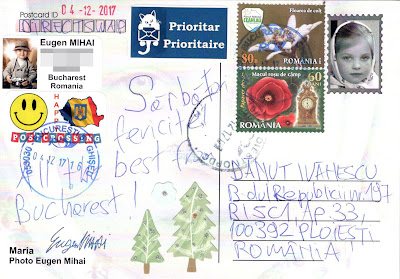 |
| 2839 Moroşeni from Şugatag village in traditional clothes |
Posted on 25.10.2016, 13.02.2017, 07.12.2017
Maramureş is a geographical, historical and ethno-cultural region situated along the upper Tisza River, and partitioned between Romania and Sub-Carpathian Ukraine after the WWII. With its picturesque countryside of small villages, rolling hills, pastures, and meadows full of wildflowers, Maramureş epitomizes all that the rural lifestyle encompasses. It is a small and unique location in the geographical heartland of Europe that has carefully and distinctively preserved the culture, traditions and lifestyle of a mediaeval (or even older) peasant past.
 |
| 2950 Little girl from Maramureş |
Little has changed in the centuries gone by. Families remain in the same villages as their ancestors. Traditional skills and crafts are passed down from generation to generation. Traditional hand-woven clothing continues to be practical. The church continues to be the soul of the village. Neighbours know one another and continue to lend a helping hand. The mystery of rural traditions unfolds before the visitor as a living museum that is at once within reach yet simultaneously beyond the grasp of the traveller.
 |
| 3211 Maria |
The traditional costumes of the Moroşeni, as the people of Maramureş call themselves, are impressive through beauty and simplicity, and each region has a local specific. For instance, the costume of the Land of Lăpuş is much more elegant and sobre. The defining elements of the women's clothing are: kierchief, white shirt with sleeves ended in cuffs and flounces, ample skirts, covered by the two aprons (zadii) with horizontal stripes (usually black alternating with red, yellow or orange). Over the shirt, women wear a jerkin (pieptar) richly decorated. Often have at neck collars of colored beads.
Men wear short white shirts, wide trousers (izmene) in summer and trousers made of wool (cioareci) in winter and hats on their heads. The jerkin gives vividness to the costumes. Both women and men wear as footwear opinci, and during wintertime the costume is completed by a woolen coat (gubă). In the past, people could recognize each others' origin by the costumes they wore. An identification element for the women was the way the stripes on their aprons were disposed or the chromatics, and for the men, the color of their coat.
Maramureş is a civilization of wood, made obvious by the splendid wooden churches and the numerous buildings of lay architecture. The local craftsmanship can be best observed in the monumental Maramureş gates, guarding the entry to the houses, and social mark of the owner. Supported by three columns, they feature traditional ornamental motifs, including the sun, the stars and the twisted rope - both symbols of life and continuity. Losing their initial significance the motifs carved were transferred from the magical and mythical level to the artistic level.
About the stamps
On the postcard 2839
Prepaid postcard (the coat of arms of the Socialist Republic of Romania, 1965-1989).
On the postcard 2950
The first stamp is part of the series Love Nature! Ceahlău National Park, about which I wrote here. The second stamp, depicting Anthericum ramosum (Anthericum ramosum) (0.50 RON), is part of the series Flowers' Clock II, about which I wrote here
On the postcard 3211
The first stamp is part of the series Love Nature! Ceahlău National Park, about which I wrote here. The second stamp, depicting Field Poppy (Papaver rhoeas), is part of the series Flowers’ Clock I, about which I wrote here.
References
Maramureş - Traditions - Romanian Monasteries
Traditional Costumes - Visit Maramureş
Costumul popular din zona Maramureşului Istoric (rom) - Consiliul Judeţean Maramureş
Maramureş - Romania Tourism
Sender 2839: Ovidiu Bucşe
Sent from Zalău (Sălaj / Romania), on 21.10.2016
Photo: V. Stamate / issued in 1978
Sender 2950: Eugen Mihai (direct swap)
Sent from Bucureşti (Bucureşti / Romania), on 06.02.2017
Photo: Eugen Mihai
Sender 3211: Eugen Mihai (direct swap)
Sent from Bucureşti (Bucureşti / Romania), on 04.12.2017
Photo: Eugen Mihai



No comments:
Post a Comment